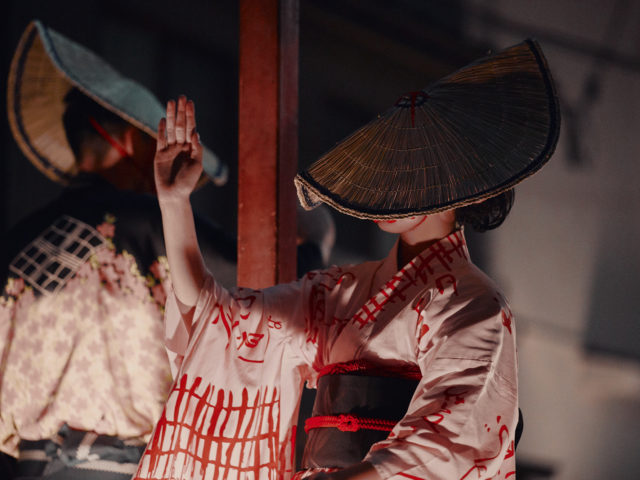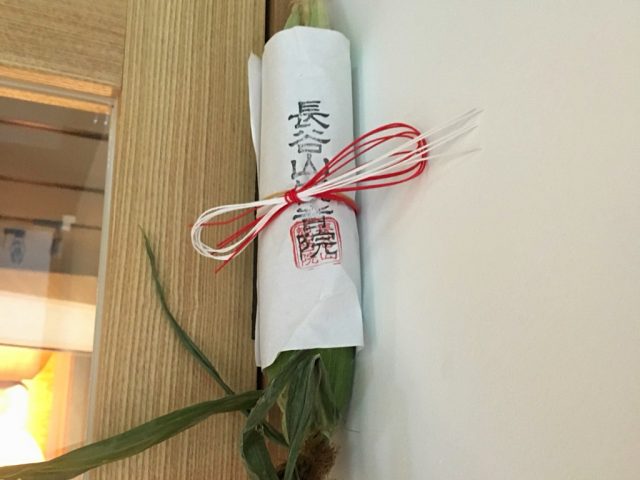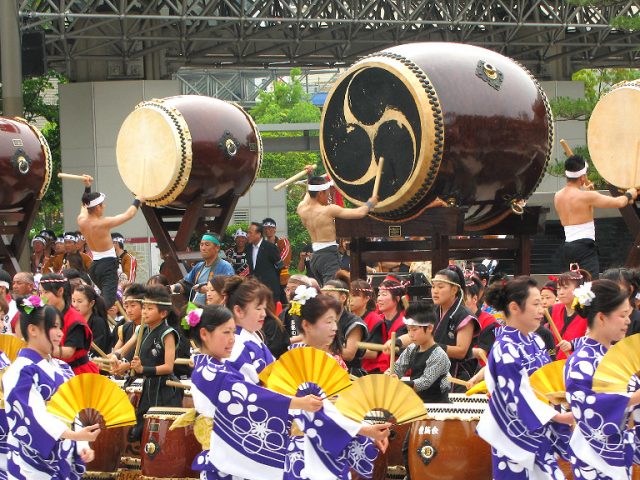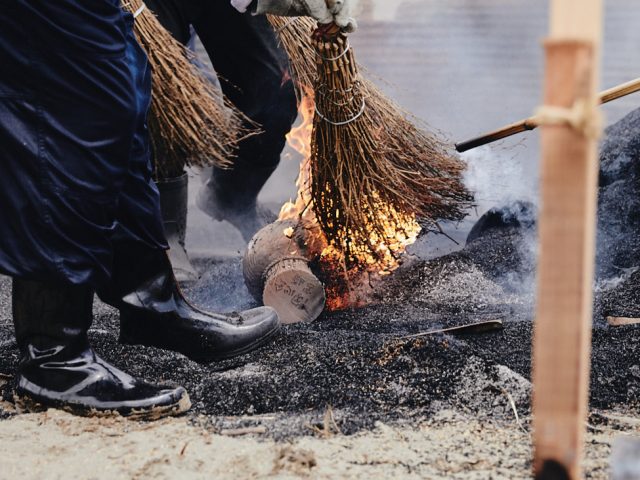The Story of Tatemachi Street’s Monster Fan
This article is no longer being updated and may contain old or incorrect information. For the latest information on Kanazawa and recommendations for guests of Kaname Inn Tatemachi, please check our IDEAS main page.

If it’s one thing Japan is known for, it’s monsters and monster-sized . . . well, everything! Monster lizards rising up along the shores as a metaphor for nuclear destruction, monster hornets in the heat of summer as big as your fist, pocket-sized monsters which you can chase and capture on your smartphone virtually anywhere, and on a cool November afternoon in 2016 here on Tatemachi Street, a monster folding fan flew over a crowd of people in the biggest version of tosenkyo anyone had yet seen.
Japanese Monster Darts
video courtesy of Tatemachi Street
A Geisha Game from Kyoto
Although “Japanese Darts” could be one way to describe tosenkyo in English, this geisha game is more elegant to watch and relies on both skill and luck to play well.
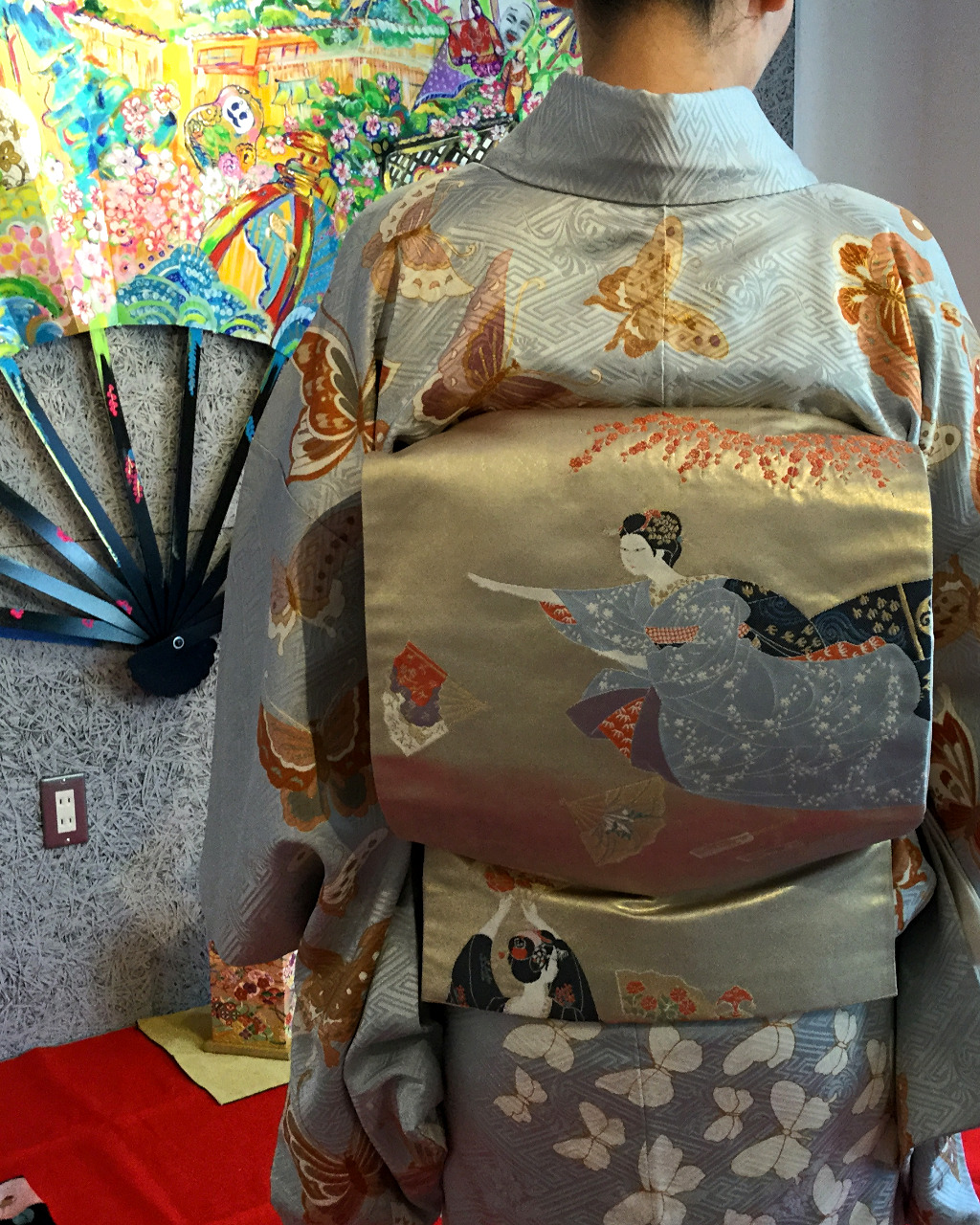
Based on a similar game of tossing arrows into a pot, tosenkyo is believed to have been developed by a Kyoto gentleman, awoken from his nap by a butterfly. Tossing his fan to chase it away from his pillow gave him the idea for the game, as well as the names for each of the game’s props.
Two opponents face off with a special target called cho, or “butterfly,” between them. Each takes a turn opening, turning, and then tossing a specially-made paper folding fan, or ōgi, at the target. Most successful hits score a point, so long as the cho’s dangling bells make a sound and the makura, or “pillow”—the stand on which the cho was set—is not not disturbed.
The final positions of the fan and cho determine the points, with the those hardest to replicate scoring highest. A judge determines which outcome has been achieved and resets the cho after each turn. When each opponent has taken five turns, a winner is declared.
 image courtesy Tatemachi Tosenkyo Project
image courtesy Tatemachi Tosenkyo Project
From Kyoto to Kanazawa and Kaname Hostel
As with other geisha games, tosenkyo has made its way into the public eye as once-secretive tea houses open their doors to travelers and locals alike, and across Japan, old traditions, crafts, places, and practices are brought to light new in modern times so as not to be forgotten. Kanazawa, with its well-preserved streets and architecture untouched by warfare, hosts many such intersections of the traditional and the contemporary.
The Japanese Monster Darts event on Tatemachi Street was no exception.
Getting Ready
In the weeks preceding the event, a team of artists, engineers, filmmakers, and tosenkyo masters came together in Kanazawa to make this monster-size version of a geisha game a reality, transforming little fans, no more than the span of one’s hand, into two-meter-wide works of moving art.
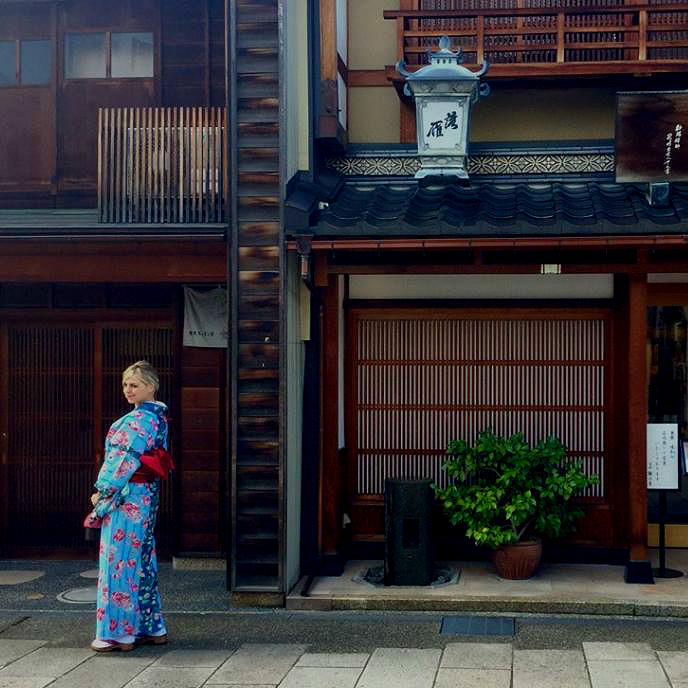 After a visit to the kimono shop, Erihana, Olesya tours the lesser-known western geisha district of Kanazawa, Nishi Chaya Gai.
After a visit to the kimono shop, Erihana, Olesya tours the lesser-known western geisha district of Kanazawa, Nishi Chaya Gai.
Traveling artist Olesya Ianovitch spent many concentrated days immersed in Kanazawa culture and crafting, applying her experience and personal touch to the fans that would sail the street in vibrant color. Meanwhile, students and faculty of the Kanazawa Institute of Technology tested materials and distances to find the best possible combination in time.

On Tatemachi Street, Kaname Hostel accommodated the film crew and turned the lobby area into a private studio for Olesya.
Tatemachi’s Titanic Tosenkyo
As the big day approached, the paint palettes were cleared away, red carpets were laid both along the street and in the middle of the lobby as Kaname Hostel opened its door for everyone to come play tosenkyo.
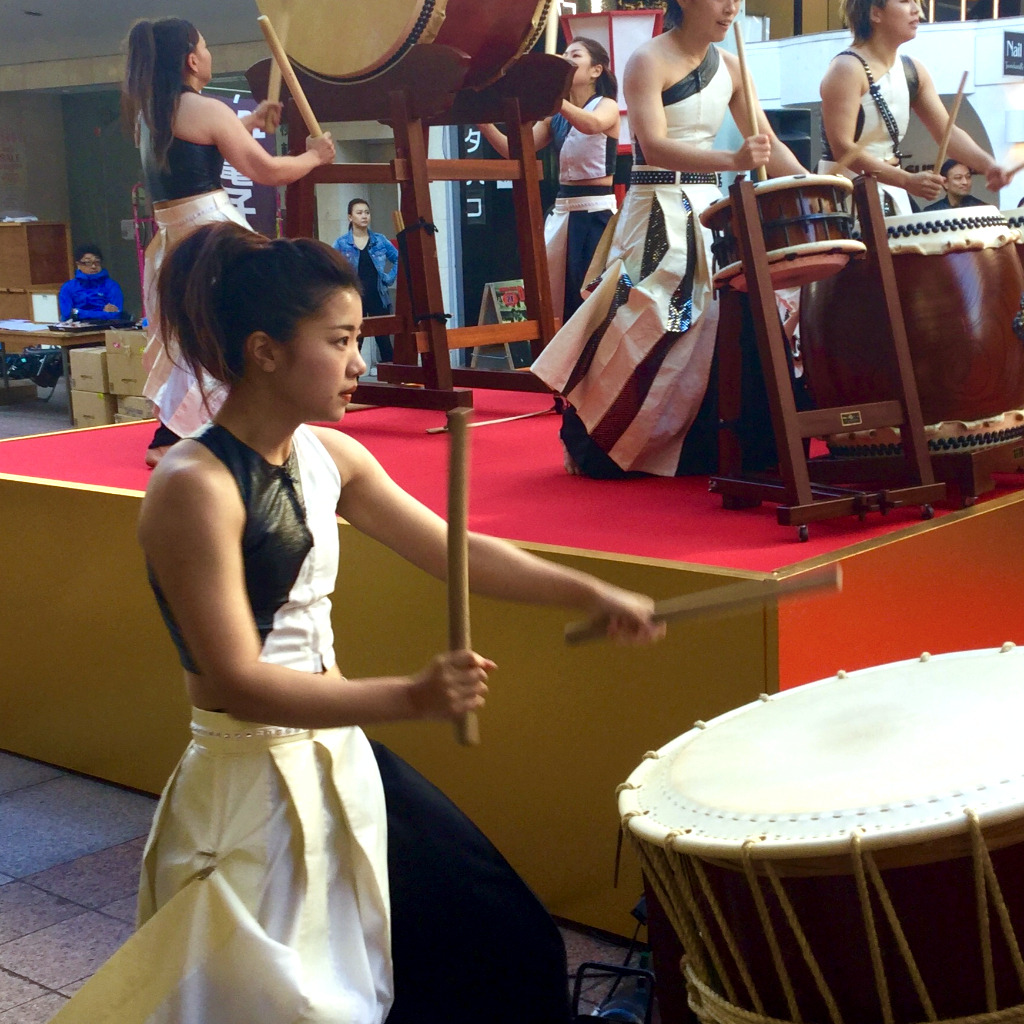
The main event on the street opened with an impressive taiko drum performance by DIA+, a fierce all-women’s group of musicians and dancers.
Geisha, called geiko in Kanazawa, traveled across the Sai River from Nishi Chaya, the most remote of Kanazawa’s three geisha districts, to dance before the gathered crowd to a song only heard in the tea houses of Kanazawa.
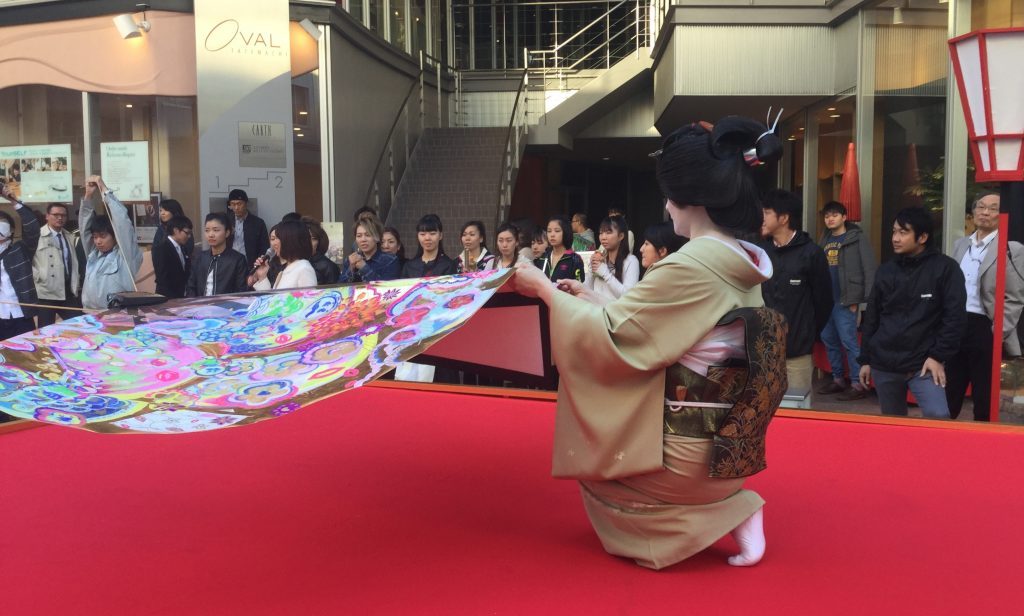
Finally, the geiko, Olesya, and the tosenkyo instructors who had just been teaching everyone how to play in the hostel lobby, all took turns launching the massive painted fans at oversized cho across the grand red carpet.
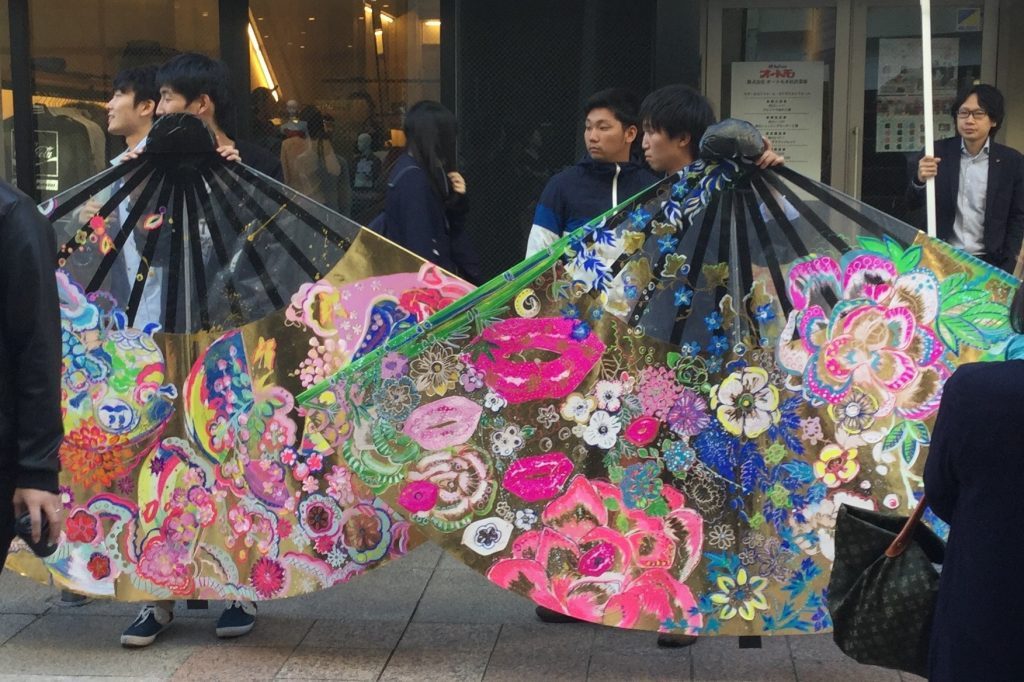
Kaname Hostel’s Souvenir
Olesya painted three fans in total for the Japanese Monster Darts event, the most detailed of which now hangs in Kaname Hostel’s lobby. The collage tells her story, moving from right to left, like a traditional Japanese book. A set of passionate lips, Olesya’s signature motif, open to introduce the Japanese fan-throwing game, followed by an avalanche of sights, tastes, and sounds spilling across the fan’s gilded surface, until another’s lips overflow with such stories, eager to share all that has been impressed upon their owner.
Do you recognize any of the icons featured in Olesya’s painted fan? Have you seen and experienced these while in Kanazawa?
- The Kotoji-toro Lantern
- Yamato Takeru, a.k.a. the Meiji Monument
- The Noh Theatre
- The Noh Museum
- yukizuri, or “snow-hanging ropes” on winter trees
- shimenawa, sacred ropes that protect shrines and holy sites
- Hyakuman-san (“Mr. One Million”), the local bullet train’s mustachioed mascot
- the sounds of the stringed shamisen or the beat of a taiko drum
- a bowl of ramen noodles
- fishcake dumplings
- ice cream with gold leaf
- other gold leaf foods and products
- wearing a yukata or kimono
- kutani-yaki ceramics

About a decade ago Rachel fell off a bus and then fell in love with this traditional-crafts and ice-cream-consuming capital of Japan. Editor and amateur photographer with a penchant for nature and history. Not actually fifty songbirds in a trench coat. (Former penname: Ryann)

